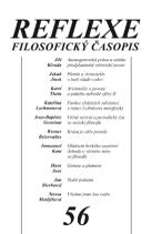Time and Intention in Augustin’s Early Treatise De immortalitate animae
Augustine’s De immortalitate animae (3,3–4) contains his earliest analysis of time, and it anticipates in many respects his disquisitions from Book XI of the Confessions. It employs the notion of an intentio which grounds the present and separates the future from the past and it highlights the capacity of soul to connect the present with the past and the future, i.e. the existent with the nonexistent. Augustine is probably the first to introduce intentio – i.e. intention or attention – into the analysis of time. In his later use, it evokes a constitutive characteristics of the soul: her being linked to another, or else to herself qua another.
Backlinks: Reflexe 44
